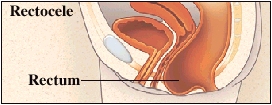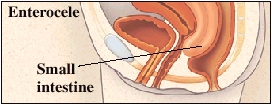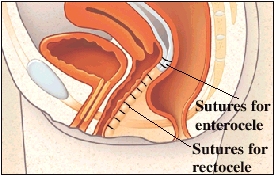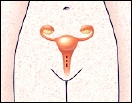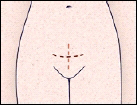Pelvic Organ Prolapse: Surgery for Rectocele and Enterocele
Pelvic Organ Prolapse: Surgery for Rectocele and Enterocele
The organs in the pelvis are supported by structures around them. Things like aging and childbirth can cause these structures to weaken. Loss of support lets pelvic organs fall out of their normal position. This is called prolapse. If the rectum falls out of place and bulges into the vagina, it is called rectocele. If the small intestine falls out of place and bulges into the vagina, it is called enterocele. Surgery can be done to fix these problems. This will help relieve your symptoms.
The surgical procedure
To correct a rectocele, the rectum is moved back to its normal position. The tissue between the vagina and rectum is stitched (sutured) to strengthen it. This stops the rectum from bulging into the vagina.
To correct an enterocele, the small intestine is moved away from the vagina. Excess tissue is then sutured. This holds it in place.
Sometimes a synthetic material or biologic graft is used in the process of correcting the defect.
Your incisions
During surgery, the doctor reaches your pelvic organs through the vagina or the abdomen. If going through the vagina, incisions may be made in the wall of the vagina. If the surgery is through the abdomen, several small incisions may be used to perform laparoscopic surgery. Or one larger incision either up and down (vertical) or across (transverse) may be used.
Possible risks and complications of prolapse surgery
Infection
Bleeding
Risks of anesthesia
Damage to nerves, muscles, or nearby pelvic structures
Blood clots
Prolapse of the pelvic organ or organs occurring again
Updated:
October 03, 2017
Sources:
Pelvic Organ Prolapse in Women: Choosing a Primary Surgical Procedure. UpToDate.
Reviewed By:
Goode, Paula, RN, BSN, MSN,Sacks, Daniel, MD, FACOG
